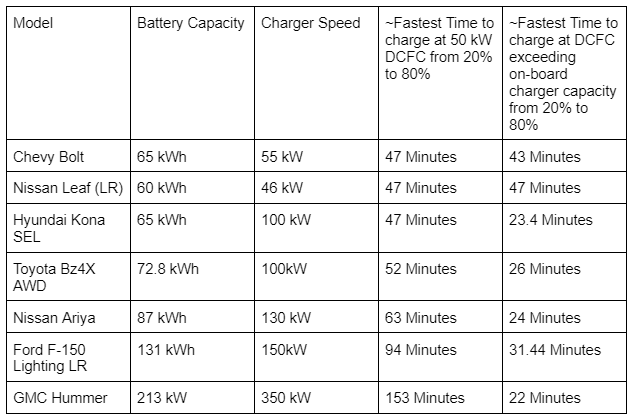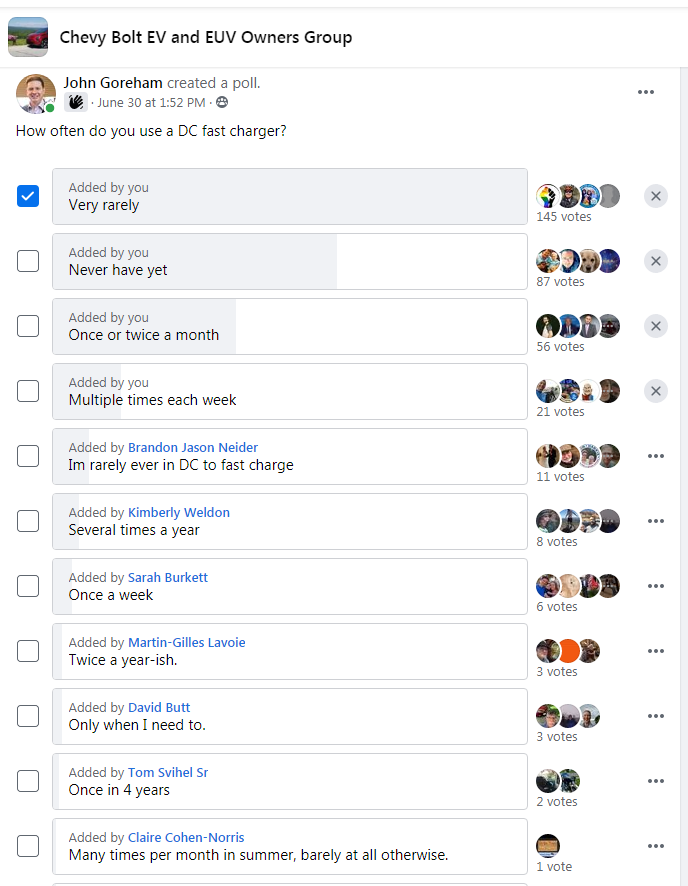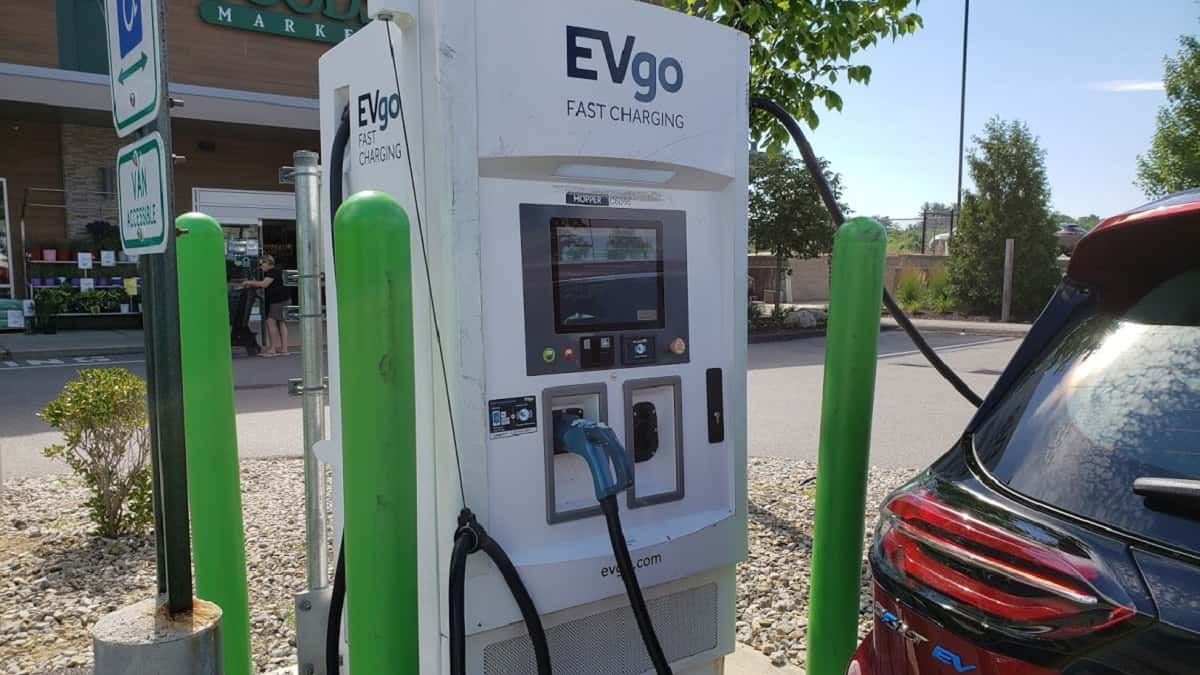The Chevrolet Bolt is a remarkable car. When it debuted, it won many prestigious awards. The Bolt EUV version was named the best EV overall for 2023 by Car Talk and has also won many other awards. Yet, like all battery electric vehicles, the Bolt is not all things to all drivers.
Related Topic: The Auto Media Hyped the Price of The Chevy Equinox EV - Why?
As great as the Bolt and Bolt EUV are, the car has earned an unfair reputation in one regard. It has a reputation as being slow to charge in public on “high-speed chargers.” Early Bolts didn't even come standard with direct current fast charging (DCFC) capability. They have for a couple of years, but the DCFC charging rate is 55 kW. Is this slow? Only by comparison to more expensive BEVs and only under some circumstances.
Electric Vehicle Terms: EVSE vs. Charger - What Does Each Term Mean?
DCFCs are not all the same, and many only have a 50 kW charging capacity. For many years, there were no DCFCs in my area of Metro Boston with a capacity faster than 50 kW. There are now, but the old 50 kW units still exist and are charging EVs right now as I type this. For example, there are a pair in Marlboro, Mass. with a 50 kW rating. At these 50 kW chargers, no vehicle will charge faster than a Bolt will, and many vehicles will charge from 20% to 80% SOC much slower than a Bolt will.
Here's what Inside EVs says about the history of the Bolt's charging speed.
The next factor is the car’s onboard charger rate. The Bolt’s rate is nominally 55 kW. All charging rates are nominal, not exact. This is where the Bolt has earned its bad reputation. 55 kW seems much “slower” than many newer, more expensive EVs. But is it? Not when connected to a 50kW DCFC charger it is not. And 50 kW DCFCs are still all over the place.
Under ideal circumstances, new, very expensive battery-electric vehicles connected to (hopefully working) DCFCs with a high capacity can charge faster than a Bolt can. How much faster? We created a chart to see. We did some quick math to see how fast vehicles could charge from 20% state of charge up to 80% state of charge. In one column, we examine the speed to add that SOC at a 50 kW-rated DCFC. In the second column, we examine the speed when the DCFC has a charger rating equal to or greater than the car’s onboard charger can handle. A car can only charge as fast as its onboard charger lets it, regardless of how fancy and powerful the DCFC equipment is.

When charging at a 50 kW rated DCFC, the Bolt charges as quickly from 20% to 80% as all of the vehicles on our list. In fact, it is dramatically faster than the glutton-sized “big battery” vehicles like the F-150 Lighting and GM’s own GMC Hummer.
When connected to a newer DCFC with a higher charging capacity rate, the Bolt is “slower” to charge to its 80% goal. It takes the Bolt about 50% more time, or about 20 minutes longer than some of its fellow BEVs. However, all the BEVs on our list take at least 22 minutes to do the charging we are describing.
We’ve left the fancy-pants Teslas off our list because they don’t really share public DCFCs with the cars on our list. When away from home, Tesla owners usually charge at Tesla-only Superchargers. Sure, we all pretend Superchargers are now “open to other brands,” but are they really? Where and how many? It’s a handful at best. Maybe later that will change.
 Bolt Owners Mostly Charge At Home According to Our Polling
Bolt Owners Mostly Charge At Home According to Our Polling
Another consideration key to this discussion is that most Bolt owners charge at home most of the time. In fact, most BEV owners charge most of the time at home. This is starting to shift as ride-share operators begin to move to BEVs, but most people using their BEVs during their typical week use a Level 2 charger at home. Although Bolts are certainly popular non-Tesla BEVs, they represent a fraction of the electric vehicle population overall.
It’s true that under certain circumstances, at certain public DCFC chargers, Bolts take more time to charge than some vehicles do. We’re splitting fractions multiple times here. Let’s give the Bolt owners a break. After all, if you are in a pricey battery-electric vehicle and charging in public, you could have opted not to and charged at home. If you want to share the public infrastructure, pack your patience. While you are waiting for a space to open up, look for a Bolt owner and ask them how they like the best EV made.
Image by John Goreham. Chart of Bolt DCFC charging times by John Goreham.
John Goreham is an experienced New England Motor Press Association member and expert vehicle tester. John completed an engineering program with a focus on electric vehicles, followed by two decades of work in high-tech, biopharma, and the automotive supply chain before becoming a news contributor. In addition to his eleven years of work at Torque News, John has published thousands of articles and reviews at American news outlets. He is known for offering unfiltered opinions on vehicle topics. You can follow John on Twitter, and connect with him at Linkedin.





